News
Amazon’s record forest fires hit Brazil’s indigenous communities
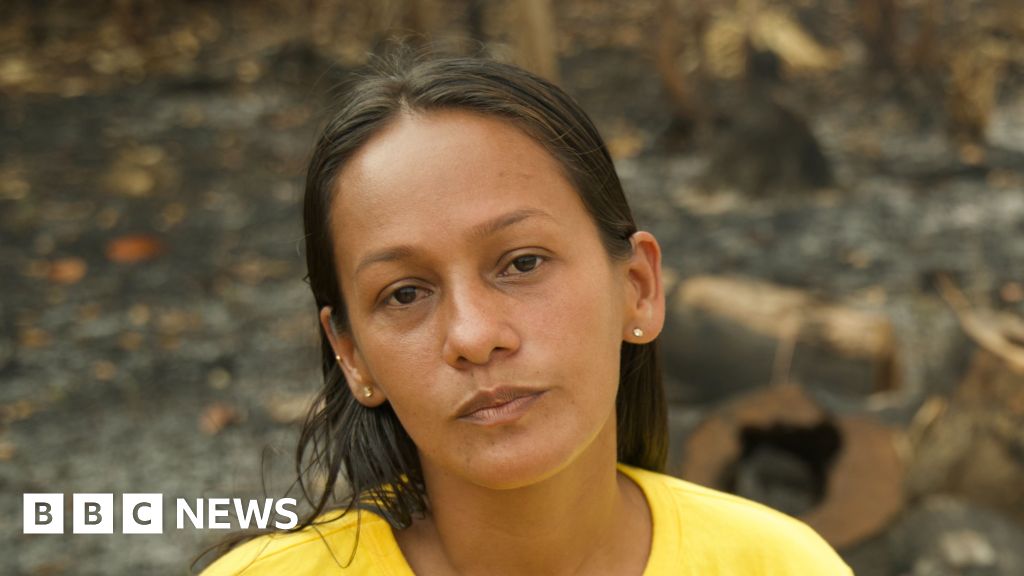
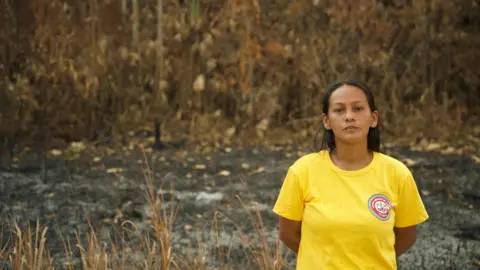 BBC
BBC“If these fires continue, we indigenous people will die.”
Raimundinha Rodrigues Da Sousa runs the voluntary fire service for the Caititu indigenous community in the Brazilian Amazon.
Their land is supposed to be protected under the Brazilian constitution.
But it has been on fire for more than 15 days.
For her brigade, their fight feels personal.
“Today it is killing the plants, in a while it will be us, because we inhale so much,” she says.
“It is a very aggressive fire that kills everything that comes its way.”
Her father, Ademar, tells us the constant smoke has caused him respiratory problems.
“I can’t sleep due to a lack of air. It wakes me up, I feel like I’m drowning,” he says.
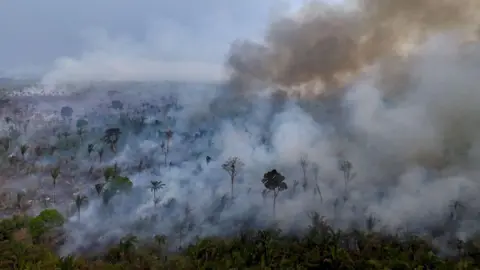 Getty Images
Getty ImagesThe Amazon has had its worst forest fires in two decades. More than 62,000 square kilometres have been burned this year already – an area bigger than countries like Sri Lanka or Costa Rica.
The world relies on the Amazon to absorb a lot of its carbon. These fires mean it is now emitting record amounts itself.
Most fires here are illegally started by humans, according to scientists, the Federal Police, and the government: loggers and miners looking to exploit land in the Amazon, or farmers turning it into pasture.
It is much rarer for fires to occur naturally in the humid, tropical rainforest.
Many fires encroach on protected reserves or indigenous land, either by accidentally getting out of hand, or set by people as deliberate attempts to grab land.
Raimundinha says that when her brigade arrives at the scene of a fire, they often find bottles of gasoline and matches.
As she speaks, she spots another plume of smoke from some trees. She is certain it was started deliberately, as they’d only just extinguished the fires there and created a natural barrier to stop it spreading, by removing any dry vegetation from the area.
Her team go to investigate. As we get nearer, there is a distinctive smell of smoke.
The landscape on the way to the fire is like a graveyard of trees, collapsed and blackened in their entirety.
The rainforest here barely merits its name. The trees still standing are charred and warped like burnt matchsticks. The ground is coated in white powder like the remains of a barbecue.
Her team try to put out the flames with hoses they use to spray water, attached to small plastic containers they wear like backpacks. The water is limited, so they have to be selective.
The problem is, as soon as one is put out, another starts.
The indigenous chief, Ze Bajaga, says that the majority of these fires are arson, set by people who “no longer want the wellbeing of humanity, or nature”.
He blames a lack of “humanity”.
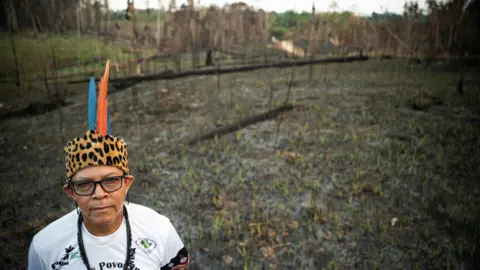
In recent years, deforestation has slowed in the Amazon. But despite attempted crackdowns by state authorities, lawlessness is still rife, and the state presence feels minimal.
Some of the Amazon is privately owned by individuals or companies. Private owners are meant to conserve 80% of the rainforest on their land by law, and can develop the remaining 20%. But this is not well policed.
Some of the land is classified as a state-owned protected reserve, or as an indigenous reserve. Some land though is undesignated entirely – meaning it is not privately owned by anyone, and has also not been protected as a reserve.
Those areas are particularly vulnerable to land-grabs. Everywhere you drive or fly over in the south of Amazonas state, mines, loggers and farms are visible.
Dorismar Luiz Baruffi, a soy farmer based in the Amazonas town of Humaitá, has owned his land for many years. He is against the fires, but can explain why farming has “exploded” in the Amazon.
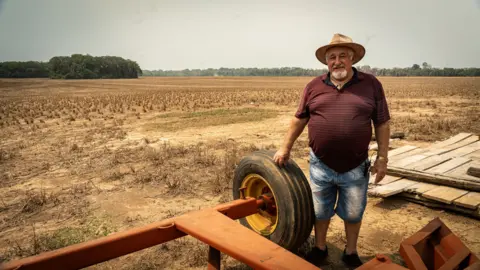
At the heart of his, and others’, argument is the belief more land should be productive, not just protected.
“Growth of the population has increased planting up here. I started here because the region is good, it rains well here,” he explains.
“I believe if you’re working within the law, there’s no problem. It is a place that provides food. It is a state that can produce a lot. I think there is still a lot of land to be cultivated here in Amazonas.”
Deforestation is bad for farmers too though. The fewer trees there are, the less water vapour is emitted to create rain for their crops – which some farmers burn their land to make room for.
“We did poorly this year because of the drought,” he says.
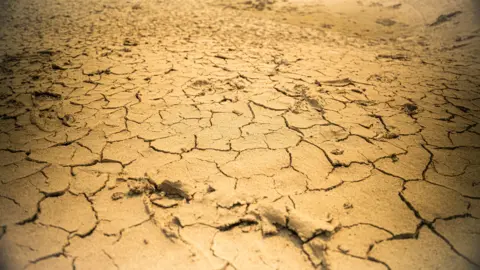
The fires may be mostly started by humans, but they have been made worse by Brazil’s worst-ever drought, which has turned the normally damp vegetation into a dry tinderbox.
The drought has seen the level of the rivers drop to historic lows, and almost 60% of the country is under stress from the drought.
The rivers, in parts, are now completely dry and resemble a parched desert.
João Mendonça and his community live by the river. But the dry riverbed means they can no longer travel on the water, meaning they are cut off from nearby towns and cities.
Every day, at dawn, they must now travel by foot to the nearest city to fill up tanks of water.
Here, dolphins can be spotted popping out of the river and blue macaws fly overhead.
But João and his fellow villagers must then carry it on their backs to their community, burning their feet on the cracked dry riverbed and occasionally passing dead river life like turtles.
They make this journey several times a day in scorching heat.
“It’s the worst drought I’ve ever seen in my life,” João says. “It has brought a lot of consequences… the absence of food on the riverside dwellers’ table. The fish are gone.”
“One of the biggest difficulties is access to the city, now the river is dry. There are elderly people, people with chronic illnesses who must make this journey.”

Sandra Gomes Vieira, who lives with a kidney disease, and her family are among those now cut off from the city.
“Before it was easier when I was feeling sick. My husband would put me in a canoe that would arrive in the city. Now, I must walk across that sand to reach it. There are days when I can’t do anything, I need people to carry me,” she says.
One of her three daughters has had to drop out of school: “She’s not studying because she couldn’t face walking across that sand in the heat. She felt sick.”
The drought is also making it harder to make a living.
“We live off selling products we grow. Now my produce is spoiling. And there is no way to take them to the city.”
The impact of these fires and the drought on people’s lives in Amazonas is clear, but their message for everybody else is too.
“There are people who don’t even care about this kind of thing,” says Raimundinha Rodrigues Da Sousa, who is battling the fires every day.
“They’re just doing it without thinking about tomorrow. But for you to live in nature, you must take care of it.”
News
Customers face heating problems if meters not replaced
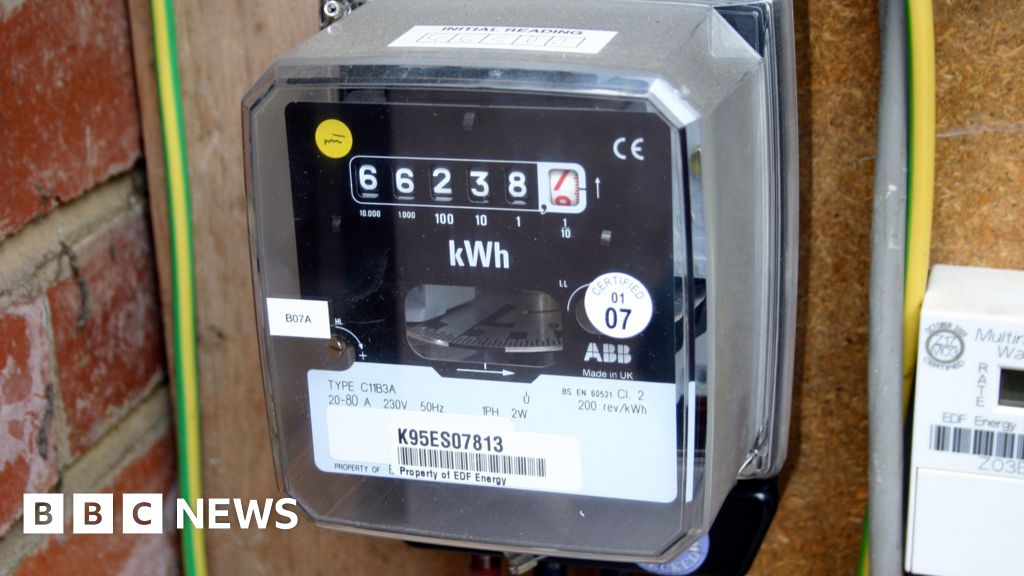
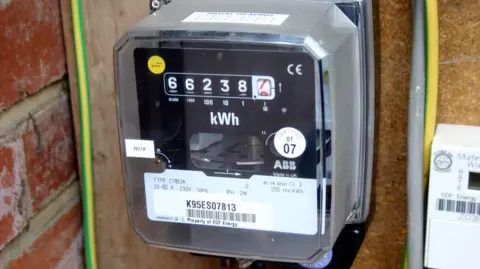 BBC
BBCAround 175,000 Scottish energy customers face major problems with their home heating systems if they do not have their meters upgraded in the coming months.
The Radio Teleswitching Service (RTS) controls energy tariffs for hundreds of thousands of homes, sending signals to store energy via the BBC’s longwave transmitter.
The signal is due to be turned off for good next June but hundreds of thousands of homes have still to be converted to updated systems.
If this does not happen, customers could lose control of heating and hot water, leaving the systems either permanently on or off.
The deadline has already been extended from last March, but energy regulator Ofgem said that work to replace the old infrastructure needed to be accelerated.
Charlotte Friel is its director of consumer protection.
“The pace of replacement is not where it needs to be,” she told BBC Radio’s Good Morning Scotland programme.
“The industry has been working on RTS replacement for some time and has replaced 200,000 meters this year, but there are still 700,000 to go.
“This call to action is about bringing the industry together and emphasising the pace needed to accelerate the replacement programme, dedicating resources, getting boots on the ground in the right places.”
How do you know you have an RTS meter?
Some customers may be unaware their meters are controlled by RTS. But there are clues.
Ms Friel said: “Typically if your meter switches between on and off-peak rates, if your home is heated by electric storage heaters and if you live in a region that is off-gas supply, these are typical features that could mean you have an RTS meter.”
The RTS switches the meter from on to off-peak mode. Once that signal is switched off it will mean the customer loses control of their heating and hot water.
This could have different outcomes in different households.
In worst case scenarios, it could mean that the heating and hot water is permanently on or permanently off.
Ms Friel said: “Some of the challenge is around getting customers to engage with their suppliers. Not everyone understands the arrangements they are on and we appreciate that.
“It is on suppliers to reach out to customers but they can play their part too by letting engineers in to upgrade their meters.”
She said that the vast majority of cases are straightforward replacements. There will be some more complex installations but Ofgem is confident there is a technical solution for everybody with an RTS meter.
 Getty Images
Getty ImagesFrazer Scott, from campaigning group Energy Action Scotland, said there were growing concerns around the switch happening on time.
“With the scale of these changes over such a short period of time, we’re really concerned that it’s simply not going to happen,” he said.
“And the consequences are considerable for all those households that might be affected when it’s switched off.”
He added: “It is unacceptable that it is so late in the day with so little certainty.”
Mr Scott said it now felt as though the industry was working together to solve the issue but described it as the “eleventh hour”.
“It is incredibly worrying but at least they’ve finally got together some kind of taskforce and hopefully this will mean there will be an acceleration in this change,” he said.
He said about a quarter of the affected households were in Scotland and the country was “disproportionately affected”.
Mr Scott also called for “proper support” for people in case their heating fails.
“People just want a certainty of supply with a much cheaper cost,” he added.
“What we’re looking for from industry is certainty that people’s bills will not rise as a result of making a meter change, which would seem ridiculous.
“But at the moment we’ve not even got those kinds of assurances from industry, and nor is it clear who will pay for additional costs should a household require them to ensure they have a safe supply to their house.”
CryptoCurrency
Tesla stock drops 3% after Q3 deliveries fall short of estimates

Tesla (TSLA) announced third quarter deliveries on Wednesday that slightly missed expectations, sending the stock down about 3%.
The EV maker delivered 462,890 vehicles in the three months ending Sept. 30, up 6.4% quarter over quarter to mark the first quarter of delivery growth this year. The numbers also came in ahead of the 435,059 EVs the company delivered in the year-ago period.
Wall Street had expected Tesla to deliver closer to 463,897, according to Bloomberg.
The Model 3 and Model Y represented the bulk of Tesla’s overall total, with those two vehicles combining for 439,975 deliveries.
Prior to the delivery numbers’ release, Tesla stock had been up around 20% in the past month, fueled by optimism about its upcoming robotaxi event on Oct. 10 and good news coming out of China indicating rising sales there.
But investors have also debated a “notably lower” annual vehicle growth rate, which Tesla warned about after the first quarter.
The company is currently dealing with stiff competition in China from Chinese automakers like BYD and Xpeng. Recent price cuts have also squeezed profit margins as competition intensifies.
Analysts have said next week’s robotaxi event will serve as a pivotal moment for the company’s future and its plans to further utilize artificial intelligence.
“We believe Robotaxi Day will be seminal and historical day for Musk and Tesla and marks a new chapter of growth around autonomous, FSD, and AI future at Tesla,” Wedbush analyst Dan Ives wrote in a note to clients on Tuesday.
Tesla will report third quarter earnings on Oct. 23.
Alexandra is a Senior Reporter at Yahoo Finance. Follow her on X @alliecanal8193 and email her at alexandra.canal@yahoofinance.com
Pras Subramanian is a reporter for Yahoo Finance. You can follow him on Twitter and on Instagram.
Click here for the latest stock market news and in-depth analysis, including events that move stocks
Read the latest financial and business news from Yahoo Finance
CryptoCurrency
FTX bankruptcy estate auctioning Worldcoin tokens this week


According to CoinGecko, Worldcoin currently has a market capitalization of approximately $792 million and a 494 million circulating supply.
CryptoCurrency
SEC files appeal in Ripple lawsuit
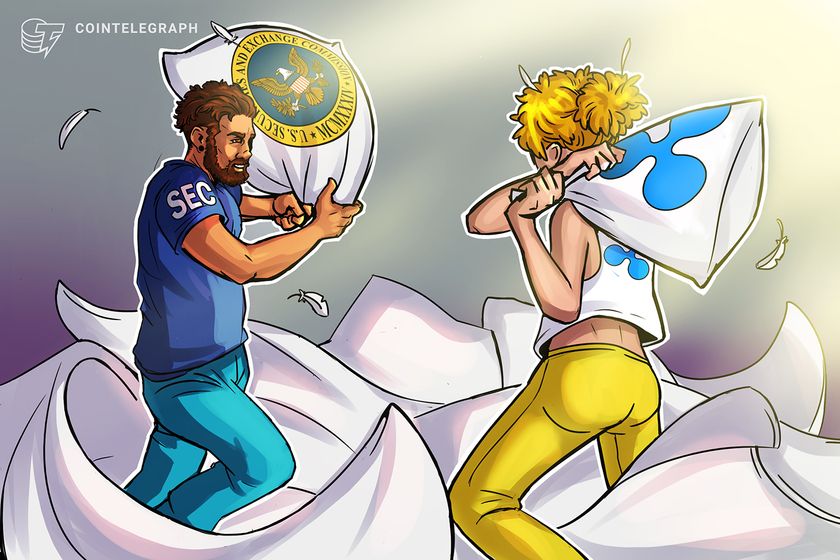

The Securities and Exchange Commission first filed the lawsuit against Ripple Labs and both its founders in December 2020.
CryptoCurrency
Fantom price gains 70% in 30 days — What’s driving FTM?
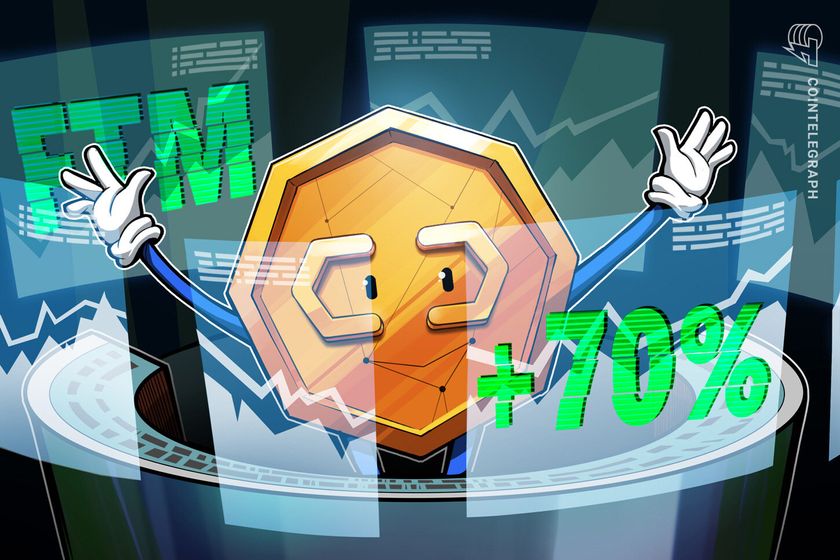

Fantom price defies the crypto market downtrend as traders anticipate a new token launch and mainnet upgrade.
CryptoCurrency
Crypto lawyers on Telegram CEO Pavel Durov’s ‘crimes’ — Is it legal?


Was it right to arrest Telegram founder Pavel Durov? Or is it like arresting a telco CEO because criminals discussed crime on a phone call?
-

 Womens Workouts1 week ago
Womens Workouts1 week ago3 Day Full Body Women’s Dumbbell Only Workout
-

 Technology2 weeks ago
Technology2 weeks agoWould-be reality TV contestants ‘not looking real’
-

 Science & Environment2 weeks ago
Science & Environment2 weeks agoHow to unsnarl a tangle of threads, according to physics
-

 Science & Environment2 weeks ago
Science & Environment2 weeks agoMaxwell’s demon charges quantum batteries inside of a quantum computer
-

 Science & Environment2 weeks ago
Science & Environment2 weeks agoHyperelastic gel is one of the stretchiest materials known to science
-

 Science & Environment2 weeks ago
Science & Environment2 weeks ago‘Running of the bulls’ festival crowds move like charged particles
-

 News2 weeks ago
News2 weeks agoOur millionaire neighbour blocks us from using public footpath & screams at us in street.. it’s like living in a WARZONE – WordupNews
-

 Science & Environment2 weeks ago
Science & Environment2 weeks agoHow to wrap your mind around the real multiverse
-

 Science & Environment2 weeks ago
Science & Environment2 weeks agoLiquid crystals could improve quantum communication devices
-

 Science & Environment2 weeks ago
Science & Environment2 weeks agoSunlight-trapping device can generate temperatures over 1000°C
-

 Science & Environment2 weeks ago
Science & Environment2 weeks agoITER: Is the world’s biggest fusion experiment dead after new delay to 2035?
-

 Science & Environment2 weeks ago
Science & Environment2 weeks agoPhysicists are grappling with their own reproducibility crisis
-

 Science & Environment2 weeks ago
Science & Environment2 weeks agoQuantum ‘supersolid’ matter stirred using magnets
-

 News2 weeks ago
News2 weeks agoYou’re a Hypocrite, And So Am I
-

 Science & Environment2 weeks ago
Science & Environment2 weeks agoWhy this is a golden age for life to thrive across the universe
-

 Science & Environment2 weeks ago
Science & Environment2 weeks agoQuantum forces used to automatically assemble tiny device
-

 Sport2 weeks ago
Sport2 weeks agoJoshua vs Dubois: Chris Eubank Jr says ‘AJ’ could beat Tyson Fury and any other heavyweight in the world
-

 Science & Environment2 weeks ago
Science & Environment2 weeks agoCaroline Ellison aims to duck prison sentence for role in FTX collapse
-

 Science & Environment2 weeks ago
Science & Environment2 weeks agoNuclear fusion experiment overcomes two key operating hurdles
-

 Science & Environment2 weeks ago
Science & Environment2 weeks agoNerve fibres in the brain could generate quantum entanglement
-

 Science & Environment2 weeks ago
Science & Environment2 weeks agoTime travel sci-fi novel is a rip-roaringly good thought experiment
-

 Science & Environment2 weeks ago
Science & Environment2 weeks agoLaser helps turn an electron into a coil of mass and charge
-
News2 weeks ago
the pick of new debut fiction
-

 News2 weeks ago
News2 weeks agoIsrael strikes Lebanese targets as Hizbollah chief warns of ‘red lines’ crossed
-

 CryptoCurrency2 weeks ago
CryptoCurrency2 weeks agoCardano founder to meet Argentina president Javier Milei
-

 Science & Environment2 weeks ago
Science & Environment2 weeks agoMeet the world's first female male model | 7.30
-

 Womens Workouts2 weeks ago
Womens Workouts2 weeks agoBest Exercises if You Want to Build a Great Physique
-

 News2 weeks ago
News2 weeks agoWhy Is Everyone Excited About These Smart Insoles?
-
Business2 weeks ago
JPMorgan in talks to take over Apple credit card from Goldman Sachs
-

 Science & Environment2 weeks ago
Science & Environment2 weeks agoA slight curve helps rocks make the biggest splash
-

 News2 weeks ago
News2 weeks ago▶️ Media Bias: How They Spin Attack on Hezbollah and Ignore the Reality
-

 Science & Environment2 weeks ago
Science & Environment2 weeks agoQuantum time travel: The experiment to ‘send a particle into the past’
-

 Science & Environment2 weeks ago
Science & Environment2 weeks agoWhy we need to invoke philosophy to judge bizarre concepts in science
-

 CryptoCurrency2 weeks ago
CryptoCurrency2 weeks agoBitcoin miners steamrolled after electricity thefts, exchange ‘closure’ scam: Asia Express
-

 CryptoCurrency2 weeks ago
CryptoCurrency2 weeks agoDorsey’s ‘marketplace of algorithms’ could fix social media… so why hasn’t it?
-

 CryptoCurrency2 weeks ago
CryptoCurrency2 weeks agoDZ Bank partners with Boerse Stuttgart for crypto trading
-

 CryptoCurrency2 weeks ago
CryptoCurrency2 weeks agoBitcoin bulls target $64K BTC price hurdle as US stocks eye new record
-

 CryptoCurrency2 weeks ago
CryptoCurrency2 weeks agoLow users, sex predators kill Korean metaverses, 3AC sues Terra: Asia Express
-

 CryptoCurrency2 weeks ago
CryptoCurrency2 weeks agoEthereum is a 'contrarian bet' into 2025, says Bitwise exec
-

 Womens Workouts2 weeks ago
Womens Workouts2 weeks agoEverything a Beginner Needs to Know About Squatting
-

 News2 weeks ago
News2 weeks agoFour dead & 18 injured in horror mass shooting with victims ‘caught in crossfire’ as cops hunt multiple gunmen
-

 Womens Workouts1 week ago
Womens Workouts1 week ago3 Day Full Body Toning Workout for Women
-

 Travel1 week ago
Travel1 week agoDelta signs codeshare agreement with SAS
-

 Politics1 week ago
Politics1 week agoHope, finally? Keir Starmer’s first conference in power – podcast | News
-

 Health & fitness2 weeks ago
Health & fitness2 weeks agoThe maps that could hold the secret to curing cancer
-

 Science & Environment2 weeks ago
Science & Environment2 weeks agoFuture of fusion: How the UK’s JET reactor paved the way for ITER
-

 CryptoCurrency2 weeks ago
CryptoCurrency2 weeks agoRedStone integrates first oracle price feeds on TON blockchain
-

 Sport2 weeks ago
Sport2 weeks agoUFC Edmonton fight card revealed, including Brandon Moreno vs. Amir Albazi headliner
-

 CryptoCurrency2 weeks ago
CryptoCurrency2 weeks agoBlockdaemon mulls 2026 IPO: Report
-

 Technology2 weeks ago
Technology2 weeks agoiPhone 15 Pro Max Camera Review: Depth and Reach
-

 News2 weeks ago
News2 weeks agoBrian Tyree Henry on voicing young Megatron, his love for villain roles
-

 CryptoCurrency2 weeks ago
CryptoCurrency2 weeks agoCoinbase’s cbBTC surges to third-largest wrapped BTC token in just one week
-

 Health & fitness2 weeks ago
Health & fitness2 weeks agoThe secret to a six pack – and how to keep your washboard abs in 2022
-

 Science & Environment2 weeks ago
Science & Environment2 weeks agoBeing in two places at once could make a quantum battery charge faster
-

 Science & Environment2 weeks ago
Science & Environment2 weeks agoA new kind of experiment at the Large Hadron Collider could unravel quantum reality
-

 Science & Environment2 weeks ago
Science & Environment2 weeks agoHow one theory ties together everything we know about the universe
-

 Science & Environment2 weeks ago
Science & Environment2 weeks agoUK spurns European invitation to join ITER nuclear fusion project
-

 Science & Environment2 weeks ago
Science & Environment2 weeks agoHow do you recycle a nuclear fusion reactor? We’re about to find out
-

 Science & Environment2 weeks ago
Science & Environment2 weeks agoTiny magnet could help measure gravity on the quantum scale
-

 CryptoCurrency2 weeks ago
CryptoCurrency2 weeks agoCrypto scammers orchestrate massive hack on X but barely made $8K
-

 CryptoCurrency2 weeks ago
CryptoCurrency2 weeks agoTelegram bot Banana Gun’s users drained of over $1.9M
-

 CryptoCurrency2 weeks ago
CryptoCurrency2 weeks agoVonMises bought 60 CryptoPunks in a month before the price spiked: NFT Collector
-

 CryptoCurrency2 weeks ago
CryptoCurrency2 weeks ago‘No matter how bad it gets, there’s a lot going on with NFTs’: 24 Hours of Art, NFT Creator
-

 CryptoCurrency2 weeks ago
CryptoCurrency2 weeks agoSEC asks court for four months to produce documents for Coinbase
-
Business2 weeks ago
How Labour donor’s largesse tarnished government’s squeaky clean image
-

 News2 weeks ago
News2 weeks agoBrian Tyree Henry on voicing young Megatron, his love for villain roles
-

 Womens Workouts2 weeks ago
Womens Workouts2 weeks agoHow Heat Affects Your Body During Exercise
-

 Womens Workouts2 weeks ago
Womens Workouts2 weeks agoKeep Your Goals on Track This Season
-

 Science & Environment2 weeks ago
Science & Environment2 weeks agoCNN TÜRK – 🔴 Canlı Yayın ᴴᴰ – Canlı TV izle
-

 Technology1 week ago
Technology1 week agoRobo-tuna reveals how foldable fins help the speedy fish manoeuvre
-

 Servers computers1 week ago
Servers computers1 week agoWhat are the benefits of Blade servers compared to rack servers?
-

 Science & Environment1 week ago
Science & Environment1 week agoX-rays reveal half-billion-year-old insect ancestor
-

 Technology5 days ago
Technology5 days ago‘From a toaster to a server’: UK startup promises 5x ‘speed up without changing a line of code’ as it plans to take on Nvidia, AMD in the generative AI battlefield
-

 News2 weeks ago
News2 weeks agoChurch same-sex split affecting bishop appointments
-

 Technology2 weeks ago
Technology2 weeks agoFivetran targets data security by adding Hybrid Deployment
-

 CryptoCurrency2 weeks ago
CryptoCurrency2 weeks agoLouisiana takes first crypto payment over Bitcoin Lightning
-

 CryptoCurrency2 weeks ago
CryptoCurrency2 weeks ago$12.1M fraud suspect with ‘new face’ arrested, crypto scam boiler rooms busted: Asia Express
-

 CryptoCurrency2 weeks ago
CryptoCurrency2 weeks agoDecentraland X account hacked, phishing scam targets MANA airdrop
-

 CryptoCurrency2 weeks ago
CryptoCurrency2 weeks agoBitcoin price hits $62.6K as Fed 'crisis' move sparks US stocks warning
-

 CryptoCurrency2 weeks ago
CryptoCurrency2 weeks agoCertiK Ventures discloses $45M investment plan to boost Web3
-

 CryptoCurrency2 weeks ago
CryptoCurrency2 weeks agoBeat crypto airdrop bots, Illuvium’s new features coming, PGA Tour Rise: Web3 Gamer
-

 CryptoCurrency2 weeks ago
CryptoCurrency2 weeks ago‘Silly’ to shade Ethereum, the ‘Microsoft of blockchains’ — Bitwise exec
-

 CryptoCurrency2 weeks ago
CryptoCurrency2 weeks agoVitalik tells Ethereum L2s ‘Stage 1 or GTFO’ — Who makes the cut?
-

 CryptoCurrency2 weeks ago
CryptoCurrency2 weeks agoEthereum falls to new 42-month low vs. Bitcoin — Bottom or more pain ahead?
-
Business2 weeks ago
Thames Water seeks extension on debt terms to avoid renationalisation
-
Politics2 weeks ago
‘Appalling’ rows over Sue Gray must stop, senior ministers say | Sue Gray
-

 Politics2 weeks ago
Politics2 weeks agoLabour MP urges UK government to nationalise Grangemouth refinery
-

 News2 weeks ago
News2 weeks agoBrian Tyree Henry on his love for playing villains ahead of “Transformers One” release
-
Politics2 weeks ago
UK consumer confidence falls sharply amid fears of ‘painful’ budget | Economics
-

 Womens Workouts2 weeks ago
Womens Workouts2 weeks agoWhich Squat Load Position is Right For You?
-

 TV2 weeks ago
TV2 weeks agoCNN TÜRK – 🔴 Canlı Yayın ᴴᴰ – Canlı TV izle
-

 News7 days ago
News7 days agoUS Newspapers Diluting Democratic Discourse with Political Bias
-

 Politics2 weeks ago
Politics2 weeks agoTrump says he will meet with Indian Prime Minister Narendra Modi next week
-

 Technology2 weeks ago
Technology2 weeks agoIs carbon capture an efficient way to tackle CO2?
-

 Technology2 weeks ago
Technology2 weeks agoCan technology fix the ‘broken’ concert ticketing system?
-

 Science & Environment2 weeks ago
Science & Environment2 weeks agoSingle atoms captured morphing into quantum waves in startling image
-

 Science & Environment2 weeks ago
Science & Environment2 weeks agoHow Peter Higgs revealed the forces that hold the universe together
-

 Science & Environment2 weeks ago
Science & Environment2 weeks agoA tale of two mysteries: ghostly neutrinos and the proton decay puzzle
-

 CryptoCurrency2 weeks ago
CryptoCurrency2 weeks ago2 auditors miss $27M Penpie flaw, Pythia’s ‘claim rewards’ bug: Crypto-Sec
-

 CryptoCurrency2 weeks ago
CryptoCurrency2 weeks agoJourneys: Robby Yung on Animoca’s Web3 investments, TON and the Mocaverse


You must be logged in to post a comment Login